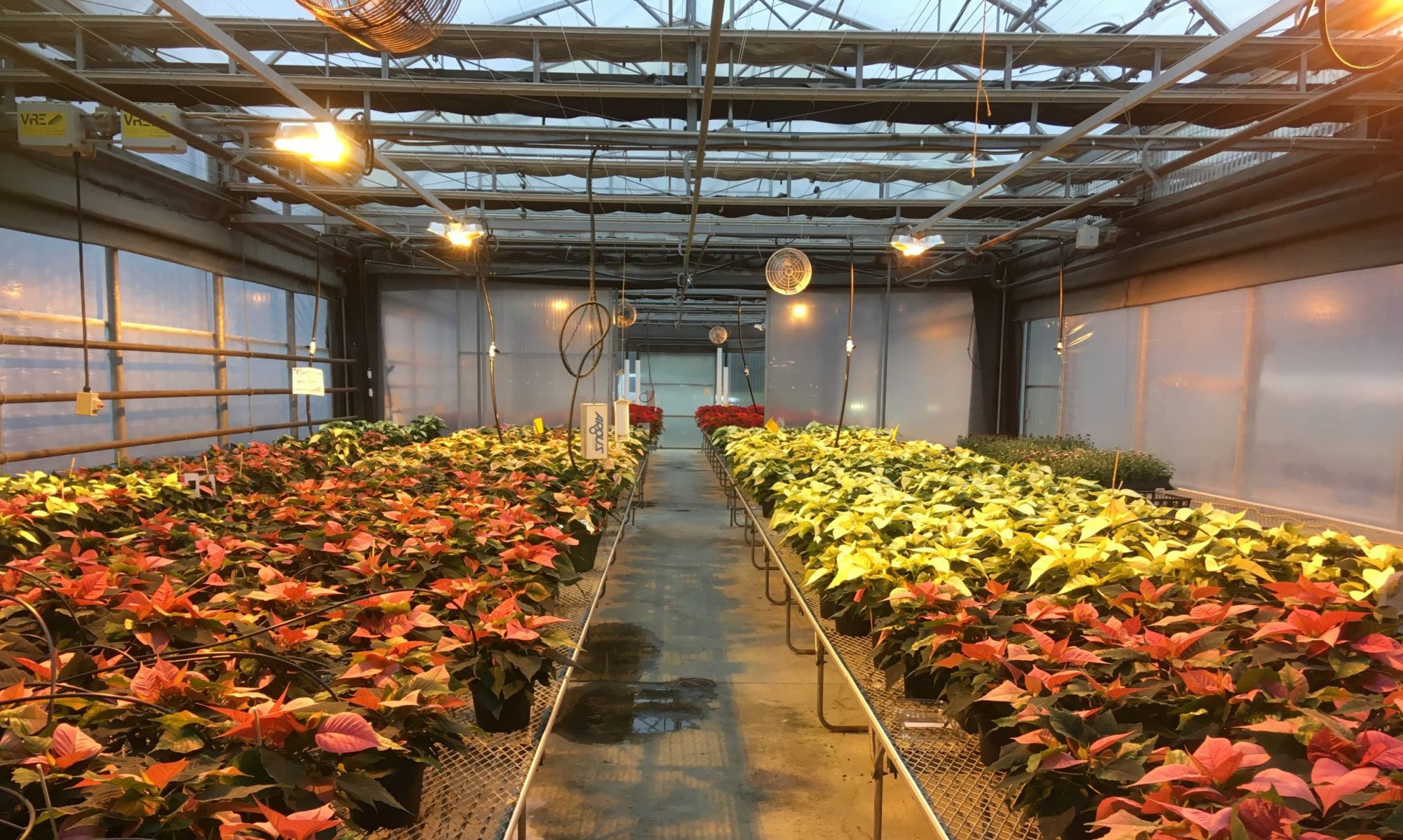Environmental Conditions:
This week we continued to see smoky skies reduce the amount of solar radiation able to get to our plants. So far we haven’t seen any adverse affects from the smoke and since our plants are on the tall side we aren’t (very) concerned about the reduced solar radiation. This week we talked about our average 24 hour temperature being 24C, this includes both the day and night temperatures averaged.
Day: Heating Setpoint 18C Cooling Setpoint 24C – we changed from 25C on Tuesday
Night: Heating Setpoint 18C Cooling Setpoint 24C
Supplemental Lighting: Due to the smoke, I changed the supplemental lighting to work off time and sensor readings in the Argus Controls system. Between 6am and 8pm (to give a 14 hour day), if the sensor on the weather station reads less than 400 W/m2 from more than 20 minutes (proof time) then the HPS lights in the greenhouse will turn on.
Hours of Black Out: Not required at this stage of growth.
Nutrient:
EC target is 1.5 – 2.0 pH target is 5.7 – 6.3
EC: The EC’s ranged from 0.4 – 1.6 again this week.
pH: Many of the pH are concerning low at 4.8. Some are fair in the 5.2-5.7 range.
Watering/Fertilizer:
The students assessed soil moisture on Tuesday in our face to face classed and based on our high(ish) EC readings they decided to clear water the poinsettias that required it. In addition to the EC measurements we used the plant heights to guide this decision. Our plants are sitting around 20cm already so, we do not need to continue to push them before black out. This gave us the confidence to decide to clear water flush as well. *Remember, we can expect our plants to double in height by the time black out starts.
Observations:
Overall, our poinsettia crop is looking good. Let us define what good means, they (mostly) have uniform lateral bud break, are growing consistently, have healthy new vegetative growth, developing root systems and are (for the most part) not experiencing many pest or disease pressures. Worth noting that the Alpina cultivar is not doing as well as the other cultivars, likely due to the fungus gnat pressure they are experiencing. There have been some signs of Pythium in this cultivar as well.
The students have been taking height measurements weekly and based on our taller than average (for this stage of production) they decided to drop the cooling temperature by 24C to slow the plants growth down. It’s important to remember that have to be vigilant in our crop monitoring so that we have the flexibility to made gradual adjustments to the environment and avoid extreme fluctuations of temperature, humidity, fertilizer or pest pressures.
We have identified that we have a fungus gnat issue in the greenhouse, especially in the Alpina cultivar. This week the students applied Hypoaspis miles a predatory mite, to the soil of each poinsettia pot. Additionally, I applied the Encarsia Formosa and Eretmocerus eremicus to the crop preventatively since we aren’t seeing whitefly, yet.
**I have asked the CIEL for more photo storage space on our blogs (I’m not sure it it’s actually possible). In the meantime you can check out my Power Point slide show of the pictures I took of the greenhouse crop this week!
